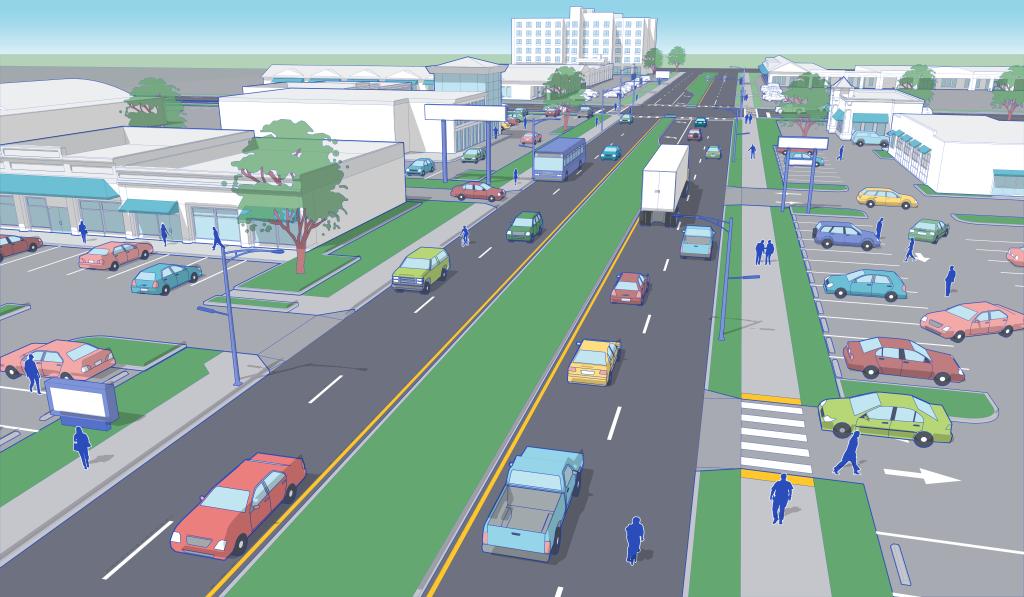
The City of Austin uses access management to improve safety along Austin streets, reducing the likelihood of traffic crashes and injuries to help Austin reach its Vision Zero goals.
Access management refers to designing and controlling entry and exit points along a roadway, such as at intersections, driveways, and median openings. These projects may result in minor changes to how drivers access properties, but our engineers work to limit impacts and maintain adequate access to properties.
- Why Access Management is Important
-
Our transportation corridors play a key role in helping people travel throughout the city and access key destinations such as jobs, restaurants, grocery stores and shopping centers. However, improper access to properties can create traffic conflicts which increase the likelihood of a crash or injury. Through access management projects, the City aims to better manage the flow of traffic at intersections, in midblock median openings, and into and out of driveways so that crashes are less likely to occur, and the crashes that do occur are less likely to be severe.
- Access Management Treatments
-

The City uses a variety of design treatments to improve safety along transportation corridors throughout Austin. Most treatments seek to reduce dangerous turning movements and redirect traffic to safer locations.
Examples of access management treatments include:
- Raised medians or hardened centerlines
- Two-way left turn lanes
- Hooded left turns
- Lane reconfigurations
- Median U-turns
- Driveway narrowing , consolidation, or closure
- Signage
Read more about access management treatments and their effectiveness in the Access Management Toolbox.
- Examples of Access Management Treatments
-
These images illustrate how access management treatments can substantially reduce the number of conflict points.
Before Access Management Treatment

After solution one: Add a raised median

After solution two: Add a hooded left turn

- Frequently Asked Questions
-
How will this program impact my business?
City engineers seek to minimize impacts to businesses while also improving safety. Before implementing projects, we work with property owners to understand traffic flow in the area and their access needs. We also aim to maintain the existing parking supply onsite and preserve the minimum number of access points as required in City Code.
Which streets will be redesigned? How were these decisions made?
The City evaluates roadway conditions and crash history along corridors throughout Austin to identify a set of potential corridors that would be good candidates for access management improvements to reduce crashes and enhance safety. Locations are selected based on a combination of crash history, safety risks (e.g. speed, conflict points, etc.) and the property’s compliance with City Code. City engineers determine specific according to safety best practices after consulting with potentially impacted property owners to fully understand their operational needs.
How can I provide input?
The City will inform adjacent businesses and property owners before installing access management treatments or reconstructing the roadway. Property owners and businesses will have an opportunity to provide feedback on proposed design changes. The City will work with stakeholders to mitigate the impacts of road construction and design changes to the extent possible.

